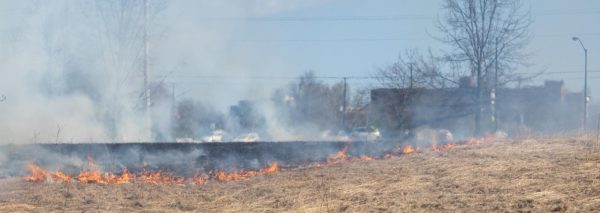East Liverpool campus has increased enrollment in CPR classses
August 4, 2010
One of Diana Stewart’s duties as assistant professor of Nursing at Kent State University’s East Liverpool Campus is to teach cardiopulmonary resuscitation (CPR) training to students in the healthcare field.
“My job is to make sure these students leave with the confidence to perform skills in their field of choice if need be,” Stewart said. “People often feel as time passes they are not confident in their skills, I want to make sure these students remember their skills and are confident.”
The East Liverpool Campus has offered eight CPR classes this year, and most of them took place last week. This year all ten slots in each class were filled.
“We are finding that we are doing well with the courses,” said Stewart. “We are at the point where we have people who want to come back to us to get re-certified so we can add more courses.”
Stewart has been teaching the class since 2003. She said typically the amount of classes offered is based on the number of students who need it in healthcare majors, but that because of a positive response from the public and increasing demand from students of other campuses, the number of classes is increasing.
“It is training that you cannot put a price on. Being prepared for an emergency situation can be the matter of life and death,” said Registered Nurse Veronica Townsend. “I feel that it is a class that everyone should take because it will give you valuable knowledge and it will help keep your composure in an emergency situation.”
The classes at the East Liverpool Campus are prioritized to be available first to nursing, occupational therapy, and physical therapy majors, after which any empty slots are then offered to the public.
“I don’t think people realize how much energy is put into the CPR class,” program director Lisa Mcnicol said. “It is pretty intense, you have to be able to learn a lot and be active.”
In the CPR classes, students are asked to read literature on topics related to the course. They watch videos on CPR and the proper way to perform the procedures.
Students are also required to demonstrate the skills they have learned through the course. Finally, the students take a written exam. If they pass, theyare awarded their certification.
Those who complete the class earn CPR certification, which is valid for 2 years.
“The class really demands a lot from you. It requires your full attention for the entire four hours because it is hands-on and everything you learn is important,” said nursing major John Lowrey. “You want to feel that you can help someone if you need to, and I am glad I was able to walk away with that feeling.”
In her classes, Diana Stewart emphasizes the proper ways to perform CPR on an adult, child or infant. These include skills such as using an AED defibrillator, knowing how to monitor breathing, properly performing chest compressions and assisting someone if he or she is choking.
Stewart says the class is great, and recommends that anyone who has the opportunity should get CPR certified. However, she is mostly concerned about how individuals will respond when they leave the class.
“I try to go over anything that a student feels uncomfortable with before the class is over,” said Stewart. “It has been proven by the AHA that if these skills are performed correctly then it can be the difference between life and death.”
Contact health reporter Wesley Freeman at [email protected].
























